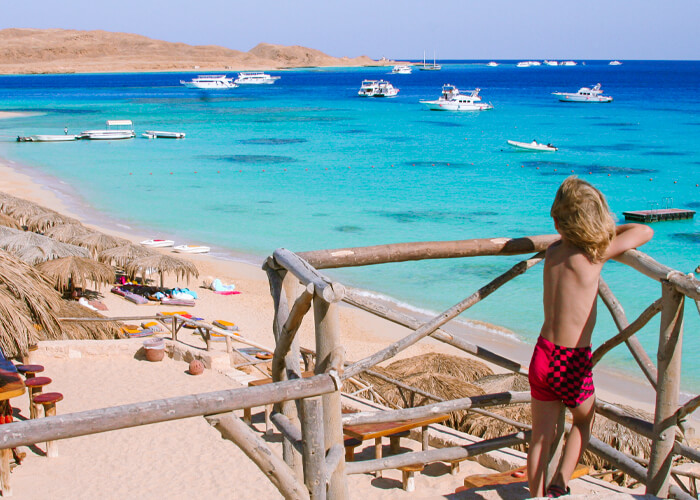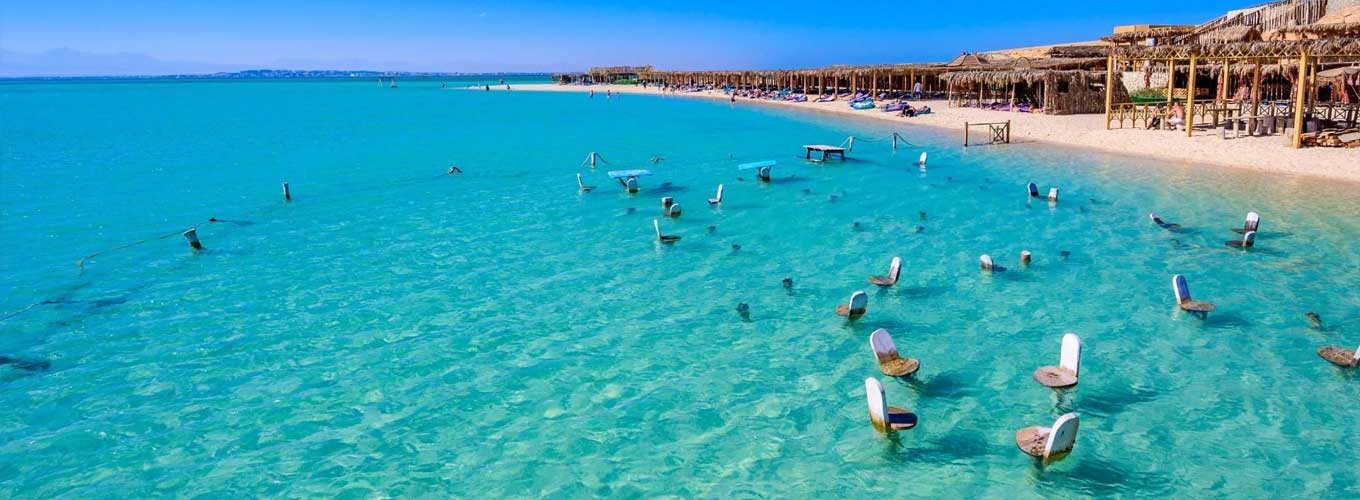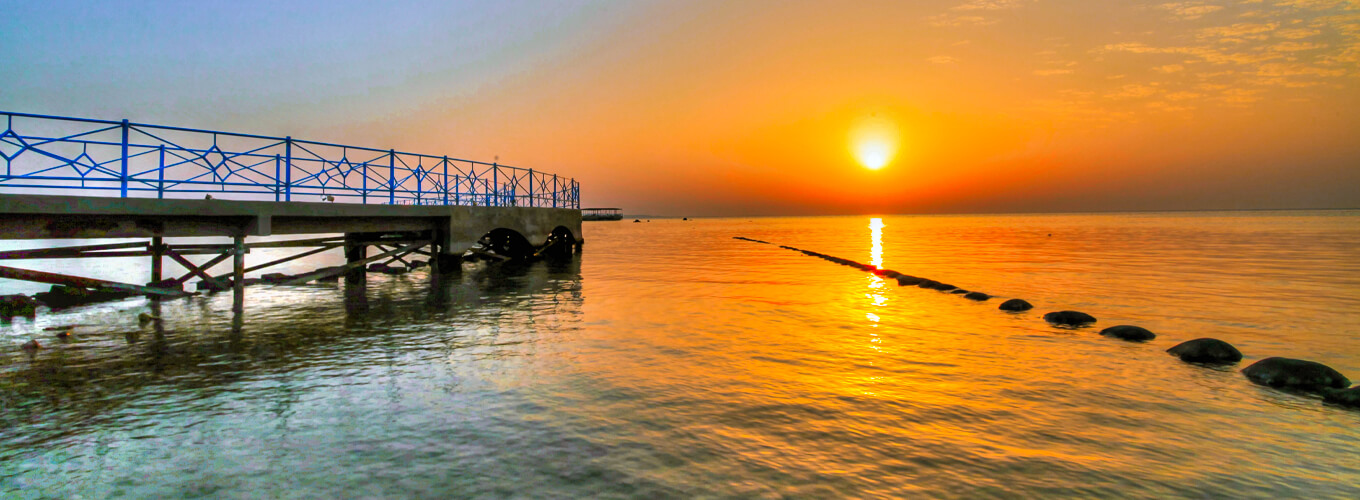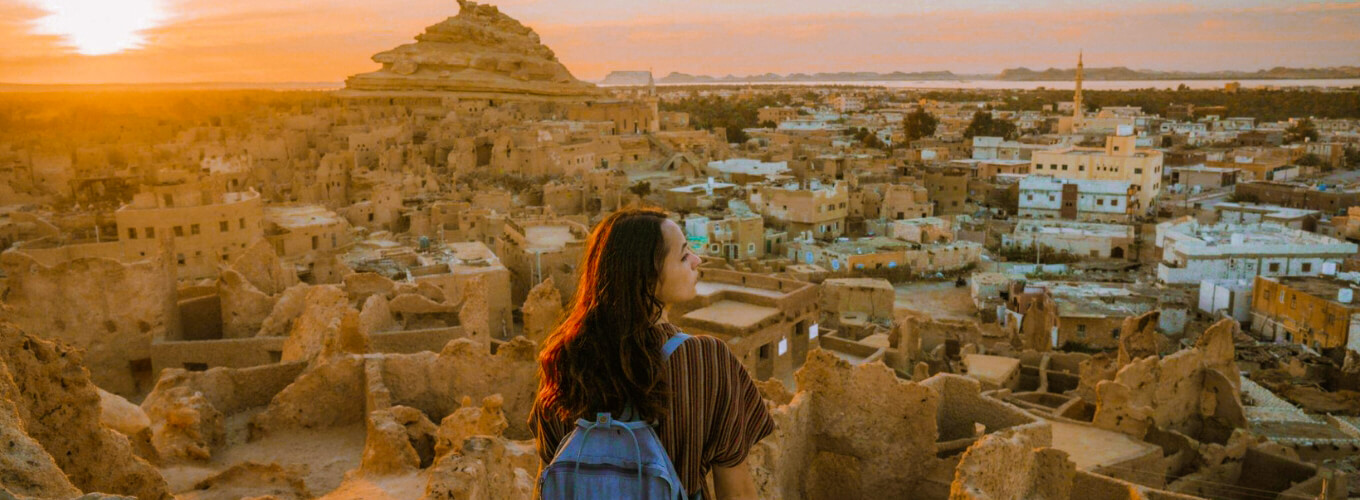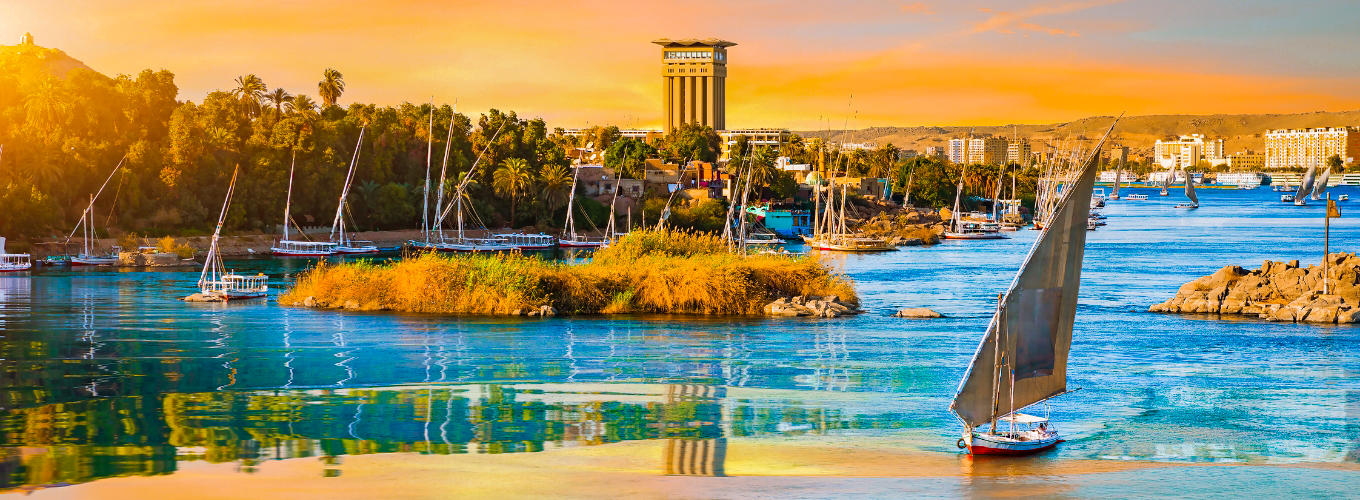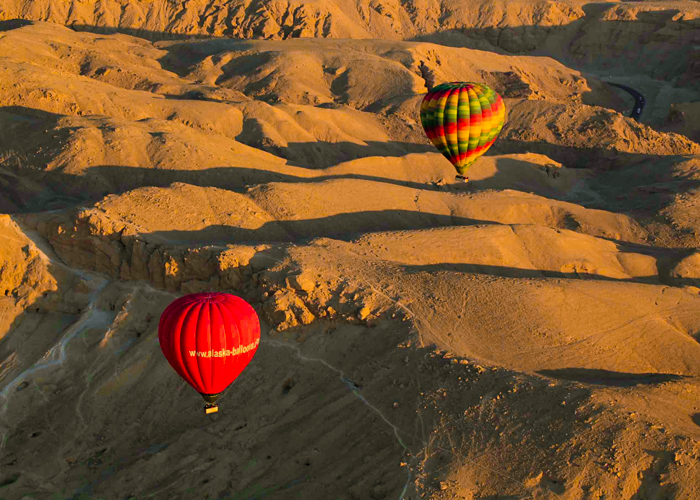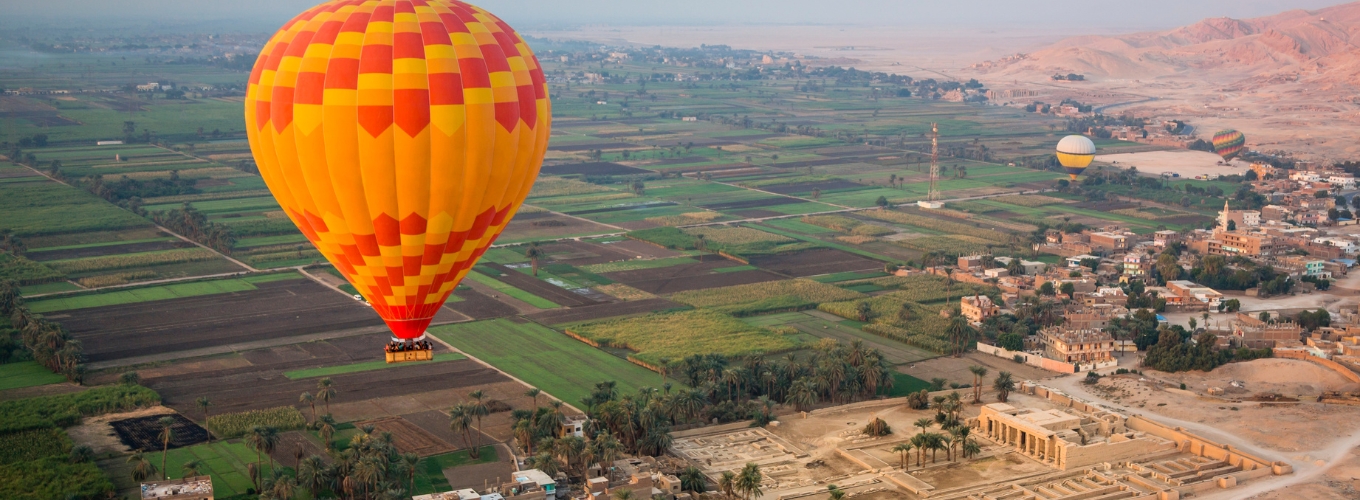The best time of year to visit Egypt depends on what kind of traveler you are and what experiences you’re looking for. Egypt’s vast landscape, stretching from the Mediterranean coast to the southern temples of Aswan, offers something special in every season. Most travelers consider October through April to be the best time of the year to visit Egypt because of the mild weather and comfortable temperatures that make sightseeing, cruising the Nile, and exploring ancient temples more enjoyable.
During this period, Cairo, Luxor, and Aswan experience daytime temperatures between 20°C and 30°C (68°F–86°F), ideal for discovering Egypt’s famous monuments without the discomfort of summer heat. This is also the best time of year to visit Egypt pyramids, as the Giza Plateau can feel scorching during summer months like June, July, and August.
However, if you prefer fewer crowds and lower prices, May and September are also appealing. You’ll enjoy warm weather, fewer tourists, and more budget-friendly tours from Egypt Via Travel, the best travel agency in Egypt, known for providing customized experiences that suit every traveler’s style.
For those who love cultural events, the best time to travel to Egypt might coincide with festivals such as the Abu Simbel Sun Festival in February or October, or the Christmas in Egypt celebrations during December. These occasions provide unique insights into local traditions and modern Egyptian hospitality.
So, what is the best time of year to visit Egypt? The answer depends on whether you value cooler temperatures, fewer crowds, or festive energy. But one thing is certain: Egypt welcomes travelers year-round with timeless beauty, ancient history, and warm local charm.
Egypt’s Climate: A Guide to Weather Across the Seasons
When planning your trip, understanding the best time of year to visit Egypt weather conditions is crucial. Egypt’s climate is generally dry and sunny, characterized by long, hot summers and mild winters. The temperature in Egypt in June can rise above 40°C (104°F), especially in southern cities like Aswan and Luxor. That’s why travelers often choose to visit between October and April, when the days are pleasant, and nights are cool.
The weather in Cairo, Egypt, in May typically averages around 30°C (86°F) during the day, making it suitable for exploring the Egyptian Museum or taking evening walks along the Nile Corniche. Meanwhile, the best time of year to visit Luxor, Egypt, falls between November and March, when you can explore the Valley of the Kings without extreme heat.
If you’re heading south, the best time of the year to visit Aswan, Egypt, is from December to February, when you can comfortably enjoy a felucca ride, visit Philae Temple, or take a Nile cruise organized by Egypt Via Travel.
Those planning to visit the Red Sea should note that Hurghada’s best beaches are enjoyable year-round, though spring and autumn offer the most balanced weather for diving and snorkeling.
So, what time of year is best to visit Egypt overall? From October through April, Egypt’s mild temperatures make it perfect for historical exploration, desert adventures, and cultural experiences. But even the warmer months can be rewarding if you plan your itinerary wisely, focusing on coastal destinations and early-morning excursions.
The Best Time of Year to Visit Cairo, Egypt
Cairo is a year-round destination, but the best time of year to visit Cairo, Egypt, is from late October to early April. During this period, the city enjoys cool breezes and average daytime temperatures between 22°C and 28°C. That means you can comfortably explore the Pyramids of Giza, wander through the Egyptian Museum, or take a stroll in Khan El Khalili Bazaar without the discomfort of summer heat.
Winter in Cairo offers a vibrant atmosphere filled with festivals, concerts, and open-air events. It’s also the best time of year to visit Egypt pyramids, as you can climb up close to the Great Pyramid or enjoy a camel ride around the plateau without direct sun exposure.
For cultural travelers, Cairo Holiday Packages by Egypt Via Travel provide customizable itineraries, combining visits to historic landmarks with experiences like Nile dinner cruises and visits to local restaurants serving authentic Egyptian food.
Summer, on the other hand, can be hot, with temperatures reaching 38°C (100°F), yet it’s a quieter time for museums and attractions. If you’re planning a visit during this season, early morning or late evening tours are recommended.
Whether you visit for ancient monuments, vibrant nightlife, or contemporary art, Cairo offers something special throughout the year. But if your goal is to enjoy comfort, clarity, and culture combined, the winter months are undoubtedly the best time.
Luxor and Aswan – Ancient Egypt at Its Best
The southern cities of Luxor and Aswan are the heart of ancient Egypt, where pharaohs built monumental temples and tombs that still stand today. The best time of year to visit Luxor, Egypt, and the best time of the year to visit Aswan, Egypt, is between November and March. These months bring cooler weather, making it perfect for visiting sites like Karnak Temple, the Valley of the Kings, and Abu Simbel.
In Luxor, daytime temperatures during winter average around 25°C (77°F), offering ideal conditions for sightseeing. Meanwhile, Aswan enjoys warm and sunny weather, perfect for visiting Philae Temple or taking a felucca boat across the Nile.
Summer can be extremely hot in Upper Egypt, with temperatures often exceeding 45°C (113°F), making midday travel uncomfortable. However, if you visit during this time, early-morning tours and air-conditioned private vehicles provided by Egypt Via Travel ensure a smooth and comfortable experience.
Many Nile cruises operate year-round, but winter remains the best time of year to visit Egypt for this kind of trip. Imagine sailing from Luxor to Aswan while watching the golden desert merge with lush palm groves — an experience that defines Egyptian beauty at its finest.
The Red Sea and Sinai – Beaches and Adventures
For travelers who love the sea, the best time of year to visit Egypt extends beyond historical landmarks to include the stunning coasts of the Red Sea. Resorts like Hurghada, Sharm El Sheikh, and Dahab are world-renowned for diving, snorkeling, and beach relaxation. The Hurghada best beaches are warm year-round, with water temperatures between 23°C and 28°C, but spring and autumn are ideal for avoiding intense summer heat.
During April–May and September–November, the air temperature averages around 27°C, creating the perfect setting for underwater adventures. Whether you’re diving among coral reefs or enjoying restaurants in Sharm El Sheikh, you’ll find these months particularly comfortable.
If you’re considering Egypt Winter Holidays, the Red Sea region is still an excellent choice. The weather remains pleasant, and crowds are smaller, making it easier to enjoy the beaches in peace.
Egypt Via Travel offers a variety of packages combining cultural experiences with relaxation by the sea, allowing you to explore both ancient history and natural beauty in one journey.
Seasonal Events and Festivals – Choosing the Perfect Time
When planning your trip, it’s not just about weather — timing your visit with major cultural or historical events can make your experience unforgettable. One of the most remarkable times to visit is during the Abu Simbel Sun Festival in February and October, when sunlight perfectly illuminates the temple’s inner sanctum — a spectacle created by the ancient Egyptians thousands of years ago.
The Christmas in Egypt season, from late December through early January, is another magical time, as cities are decorated with lights, and Coptic Christmas celebrations offer an insight into Egypt’s Christian heritage. If you’re considering a New Year in Egypt 2026, this period combines pleasant weather with festive activities, ideal for those seeking a mix of culture and celebration.
Autumn and spring also bring local events like the Cairo Jazz Festival, the Luxor African Film Festival, and various art fairs. Meanwhile, the Tutankhamun Exhibition 2025 at the Grand Egyptian Museum is expected to be one of the most visited events in the coming years, attracting Egyptology enthusiasts from around the world.
By planning with Egypt Via Travel, you can align your trip with these unique experiences, ensuring that your journey captures the spirit, history, and rhythm of Egypt.
Month-by-Month Guide: When Is the Best Time of Year to Visit Egypt?
To help you decide when is the best time of year to visit Egypt, here’s a brief breakdown:
-
January – February: Cool and comfortable, perfect for sightseeing and Nile cruises.
-
March – April: Warm and sunny; great for beaches and temples.
-
May: Start of the warmer season; best for Red Sea resorts.
-
June – August: Hot but quieter and cheaper; ideal for early tours.
-
September – October: Perfect weather returns; excellent for all destinations.
-
November – December: Peak season for culture and Christmas holidays.
Each season offers something different. For example, those asking, “what’s the best time of year to visit Egypt for pyramids?”, should choose winter. Meanwhile, divers will find May and October to be the best time of year to visit Egypt for underwater adventures.
Egypt Tours and Packages by Egypt Via Travel
Choosing the right time is essential, but having the right travel partner is what makes the experience extraordinary. Egypt Via Travel provides expertly crafted Egypt Tour Packages, designed around seasonal highlights. Whether you want a 7-day Egypt itinerary, Cairo Holiday Package, or Egypt Day Tours, each program is built to align with the best time of year to visit Egypt based on weather, events, and crowd levels.
Popular options include:
-
Egypt Tours from South Africa – Tailored experiences for African travelers.
-
Egypt Tours from the UK and Egypt Tours from the USA – Fully guided trips covering Cairo, Luxor, Aswan, and the Red Sea.
-
Egypt Winter Holidays and Egypt New Year Tours 2026 – Perfect for escaping cold climates while celebrating in warm weather.
Every detail, from hotel selection to daily scheduling, is carefully managed to ensure travelers experience Egypt’s beauty comfortably and safely.
Practical Travel Tips and Safety
Many travelers often ask, “Is Egypt safe for Americans?” or “Is it safe to travel now?” The answer is yes — Egypt is one of the safest destinations in North Africa for tourists. With the support of licensed guides and professional operators like Egypt Via Travel, your trip will be well-organized and secure.
To make the most of your visit:
-
Plan your activities early in the day to avoid midday heat.
-
Stay hydrated and wear light, breathable clothing.
-
Use sunscreen and sunglasses during outdoor tours.
-
Book tours in advance, especially during peak season (November–March).
By preparing ahead, you’ll enjoy every destination — from camel rides near the pyramids to sunset cruises in Aswan — with peace of mind.
Final Thoughts – The Best Time to Visit Egypt Awaits
So, what’s the best time of year to visit Egypt? The answer depends on your travel goals. For ideal weather and historical sightseeing, choose October through April. For quieter adventures and beach escapes, May or September is perfect. And for those drawn to special events, December and February offer unmatched experiences.
No matter when you go, Egypt’s treasures — the pyramids, temples, and the Nile — remain timeless. With Egypt Via Travel, you’ll not only discover the ancient wonders of this land but also experience authentic hospitality, modern comfort, and expert guidance that turns your journey into a lifelong memory.

